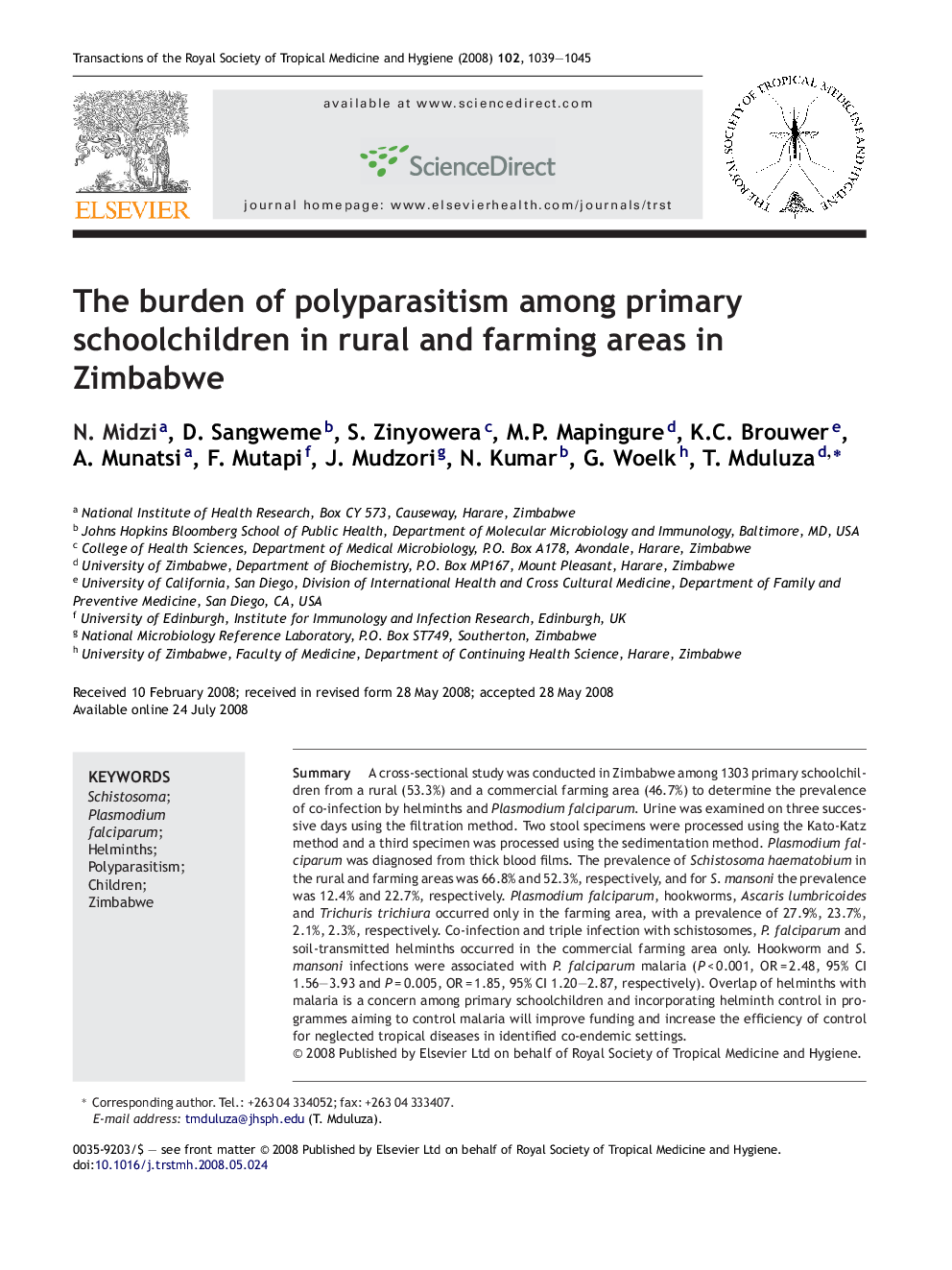| Article ID | Journal | Published Year | Pages | File Type |
|---|---|---|---|---|
| 3420728 | Transactions of the Royal Society of Tropical Medicine and Hygiene | 2008 | 7 Pages |
SummaryA cross-sectional study was conducted in Zimbabwe among 1303 primary schoolchildren from a rural (53.3%) and a commercial farming area (46.7%) to determine the prevalence of co-infection by helminths and Plasmodium falciparum. Urine was examined on three successive days using the filtration method. Two stool specimens were processed using the Kato-Katz method and a third specimen was processed using the sedimentation method. Plasmodium falciparum was diagnosed from thick blood films. The prevalence of Schistosoma haematobium in the rural and farming areas was 66.8% and 52.3%, respectively, and for S. mansoni the prevalence was 12.4% and 22.7%, respectively. Plasmodium falciparum, hookworms, Ascaris lumbricoides and Trichuris trichiura occurred only in the farming area, with a prevalence of 27.9%, 23.7%, 2.1%, 2.3%, respectively. Co-infection and triple infection with schistosomes, P. falciparum and soil-transmitted helminths occurred in the commercial farming area only. Hookworm and S. mansoni infections were associated with P. falciparum malaria (P < 0.001, OR = 2.48, 95% CI 1.56–3.93 and P = 0.005, OR = 1.85, 95% CI 1.20–2.87, respectively). Overlap of helminths with malaria is a concern among primary schoolchildren and incorporating helminth control in programmes aiming to control malaria will improve funding and increase the efficiency of control for neglected tropical diseases in identified co-endemic settings.
